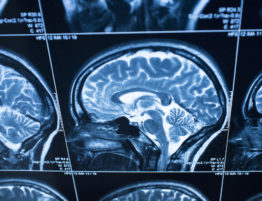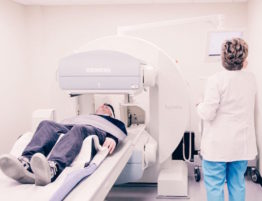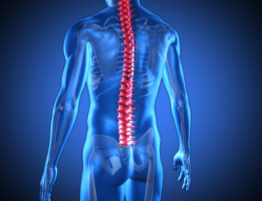Brain Basics
The brain is part of the central nervous system and is the control center of the human body. The brain allows us to know ourselves, to reason and to understand our environment and those around us.
The brain may be described as a bundle of gelatinous nervous system material floating in a protective sea of cerebrospinal fluid. The fluid acts as a shock absorber to help dampen movement of the brain when a person is jolted, or otherwise makes a quick movement. The fluid is encased inside of the skull, which acts as a protective shell. The outside of the skull is smooth, but the inside is rough and boney. These rough, boney structures inside the skull can injure the brain when a person is struck or jolted.
The brain is a sensory processor. This means that it controls thought, smell, sight, memory and touch. In addition, the brain controls vital bodily functions such as walking, talking, breathing and heart rate.
Brain structure
Most of the brain’s functions are tied to a certain section of the brain. The main parts of the brain are the cerebrum, cerebellum, brain stem and diencephalon.
Cerebrum.The cerebrum is the largest section of the brain. It is divided into the left and right hemispheres, both of which are further divided into lobes. The lobes are the frontal, temporal, parietal and occipital. Each lobe is a center for certain brain functions. The frontal lobe controls personality, judgment, reasoning, language expression and social behavior. The temporal lobe controls language comprehension and hearing and stores memories. The parietal lobe interprets sensations and visual perceptions, and the occipital lobe also interprets visual stimulus. The outer cerebrum, or cerebral cortex, is responsible for the greatest order of brain function. This includes the brain’s integration with the rest of the central nervous system. Different parts of the cerebral cortex are related to the control of cognitive abilities, memory, motor function, learning, speech and other activities linked to the autonomic nervous system such as breathing and maintenance of the heart rate.
Cerebellum. The cerebellum is a large part of the hindbrain, located behind the brain stem and under the occipital lobe. It is divided into two hemispheres and has an outer cortex made of gray matter and an inner cortex of white matter. The cerebellum controls the coordination of voluntary and involuntary muscle movements. It is responsible for muscle tone, balance, posture and the coordination of the groups of muscles that are under a person’s voluntary control.
The Brain Stem. The midbrain, medulla oblongata and the pons make up the brain stem. The brain stem is located in front of the cerebellum and under the cerebrum. It connects the upper part of the brain to the spinal cord. It acts as a relay station between incoming stimuli and the cortex. It also controls basic bodily functions such as heart rate, breathing and alertness.
Diencephalon. The diencephalon is made up of the thalamus, which relays sensory stimuli, and hypothalamus, which controls appetite, body temperature, water balance, pituitary secretions, emotions and sleep cycles. The diencephalon is positioned below the hemispheres of the cerebrum.
Brain Injury Accident Attorney • Personal Injury Trial Lawyers, Long Beach, CA
Our personal injury trial lawyers represent accident victims who have suffered a traumatic brain injury throughout Southern California, including Los Angeles County and the Counties of San Diego, Ventura, Santa Barbara, San Bernardino, Riverside, Orange County.
The brain is the central control and interpretation center for the human body. When a person suffers a brain injury, he or she may be unable to work, learn, walk or talk. If you or a loved one has suffered a brain injury, you may have legal recourse.
How to Get Started
If you or a loved one was in an accident and suffered a brain injury, it is important to seek medical attention. Because many brain injuries go undiagnosed, it is essential that you have a variety of tests and that a doctor carefully examine your symptoms. After seeking medical attention, talk to a personal injury lawyer who has experience handling brain injury cases. Our attorneys are have experience in preparing cases involving brain injuries can evaluate your situation, and walk you through all the steps in litigation and explain your chances of recovery.
Brain injury cases can be complex and difficult because of several factors. Defendants and insurance companies may not believe that the plaintiff has actually suffered a brain injury because many diagnostic tests fail to detect the injury. In addition, many individuals who suffer from a brain injury have memory loss and may not be able to remember the specifics of the accident that caused their injury. While these factors may make proving the brain injury more difficult, they do not necessarily preclude recovery for your injuries.
If you or a loved one has sustained a brain injury, it is important to discuss your situation with one of the lawyers of Stolpman, Krissman, Elber, and Silver, LLP. Contact us for a free consultation today.





